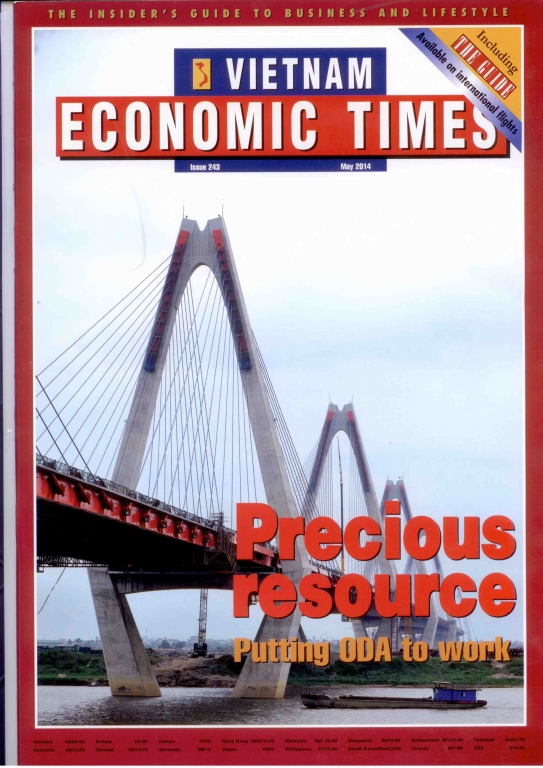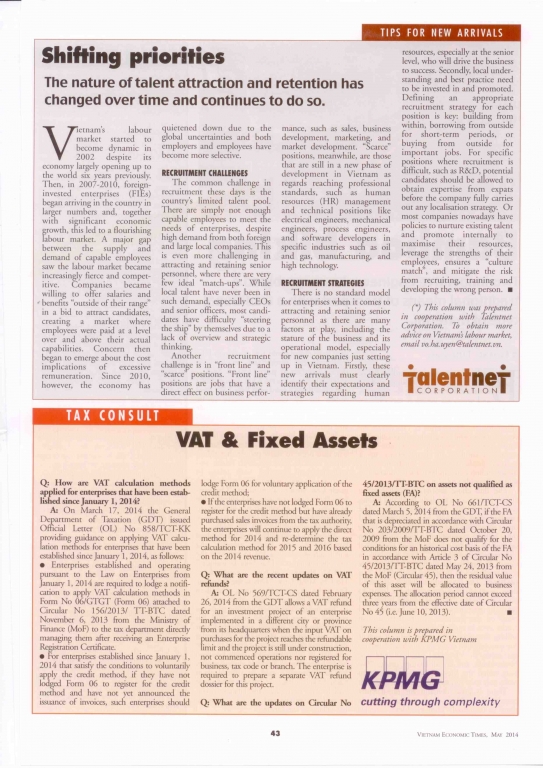Shifting Priorities In Headhunting

May 1, 2014
Because of major changes in the global economy, headhunting needs to face a lot of challenges. So, what are the best headhunting strategies in Vietnam?

Because of major changes in the global economy, headhunting needs to face a lot of challenges. So, what are the best headhunting strategies in Vietnam?


Vietnam’s labour market started to become dynamic in 2002 despite its economy largely opening up to the world six years previously. Then, in 2007-2010, foreign-invested enterprises (FIEs) began arriving in the country in larger numbers and, together with significant economic growth, this led to a flourishing labour market. A major gap between the supply and demand of capable employees saw the labour market became increasingly fierce and competitive. Companies became willing to offer salaries and benefits “outside of their range” in a bid to attract candidates, creating a market where employees were paid at a level over and above their actual capabilities. Concern then began to emerge about the cost implications of excessive remuneration. Since 2010, however, the economy has quietened down due to the global uncertainties and both employers and employees have become more selective.
Headhunting challenges
The common challenge in head hunting these days is the country’s limited talent pool. There are simply not enough capable employees to meet the needs of enterprises, despite high demand from both foreign and large local companies. This is even more challenging in attracting and retaining senior personnel, where there are very few ideal “match-ups”. While local talent have never been in such demand, especially CEOs and senior officers, most candidates have difficulty “steering the ship” by themselves due to a lack of overview and strategic thinking.
Another recruitment challenge is in “front line” and “scarce” positions. “Front line” positions are jobs that have a direct effect on business performance, such as sales, business development, marketing, and market development. “Scarce” positions, meanwhile, are those that are still in a new phase of development in Vietnam as regards reaching professional standards, such as human resources (HR) management and technical positions like electrical engineers, mechanical engineers, process engineers, and software developers in specific industries such as oil and gas, manufacturing, and high technology.
Headhunting strategies
There is no standard model for enterprises when it comes to headhunting and retaining senior personnel in such a limited talent pool as there are many factors at play, including the stature of the business and its operational model, especially for new companies just setting up in Vietnam. Firstly, these new arrivals must clearly identify their expectations and strategies regarding human resources, especially at the senior level, who will drive the business to success. Secondly, local understanding and best practice need to be invested in and promoted. Defining an appropriate recruitment strategy for each position is key: building from within, borrowing from outside for short-term periods, or buyingfrom outside for important jobs. For specific positions where recruitment is difficult, such as R&D, potential candidates should be allowed to obtain expertise from expats before the company fully carries out any localisation strategy. Or most companies nowadays have policies to nurture existing talent and promote internally to maximise their resources, leverage the strengths of their employees, ensure a “culture match”, and mitigate the risk from recruiting, training and developing the wrong person.
Learn more information with our Executive Search service.


